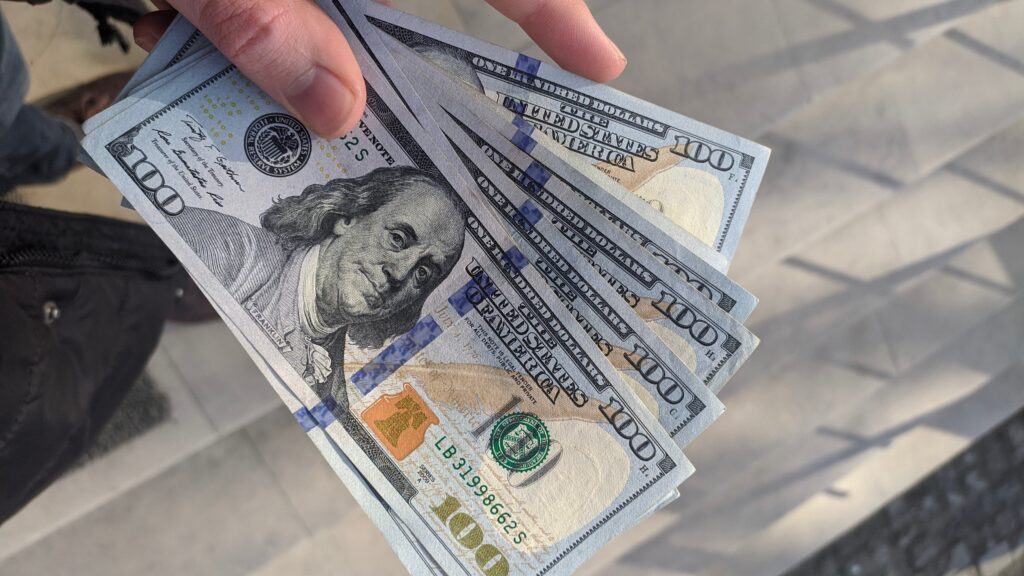Stagflation is one of the most feared economic situations, but it also can provide some of the best opportunities for investors who know how to play it right.
Stagflation tends to make people and economists uncomfortable because it’s inconsistent with economic theories. In times of stagflation, measures to curb inflation, such as wage and price controls, may further increase unemployment.
In this article, you’ll discover top-performing strategies that can help you navigate somewhat unchartered waters.
What is stagflation?
Stagflation is an economic condition in which a country experiences a sharp rise in the inflation rate amid economic stagnation. This causes a decline in the output, employment, and income levels within an economy.

The word stagflation is derived from two words, namely stagnation and inflation. Stagnation refers to slow economic growth, high unemployment, and low levels of trade and industrial activity. Inflation refers to a rapid increase in prices due to a scarcity of goods or services.
Stagflation is an unusual occurrence that many economists initially believed to be impossible. The main argument was that the economy naturally goes through phases of inflation and recession. However, these two cannot happen simultaneously based on Keynesian economic theory. Therefore, stagflation is generally considered a major economic anomaly.
The first time stagflation was seen was when the OPEC countries raised oil prices in 1973 and 1979. The high oil prices led to an increase in the cost of other goods and services and higher interest rates, leading to sluggish economic growth and rising inflation. A similar phenomenon occurred again during the global economic slowdown that started in 2008.
Why are investors concerned about stagflation right now?
The threat of stagflation has been on investors’ minds lately due to the coronavirus pandemic’s effects on the economy.
During a recovery, two scenarios can play out: Inflation stays low, unemployment rises, or inflation and unemployment rise together. Most economists think it’s likely that there will be a recovery in which inflation and unemployment both increase—and that would mark a period of stagflation.
However, investors are not worried about stagflation (which most experts agree is unlikely to happen again anytime soon), but they are worried about inflation. When inflation rises, the Federal Reserve raises interest rates to keep it in check. Interest rates are already at historically low levels, and raising them will increase borrowing costs for companies and consumers, slowing down economic activity.
So if you’re concerned about stagflation, you’re probably just worried about rising inflation. Inflation is expected to rise as we get closer to full employment, so keeping an eye on it will give you a better understanding of the economy’s health than worrying about something that rarely happens anymore.
How to invest during stagflation
If you’re feeling increasingly anxious about the potential of a recession in the near future, it’s probably time to start thinking about how to protect your investments. It can be hard to predict these things with any certainty.
Nonetheless, here are some investments have historically performed well during times of stagflation.
1. Real estate
In stagflation, investors often look to property as an alternative investment.
In years past, many retirees relied on their investments to supplement their income and pad their retirement nest egg. However, higher prices and more competition are forcing investors out of stocks and bonds into real estate. Since real estate is a tangible asset, it tends to do well during periods of uncertainty.

If you own property, it can be an effective hedge against inflation. As the dollar loses value over time, rents and real estate prices tend to keep pace or even grow faster than inflation.
Even if you don’t own property yourself, you can achieve similar results by investing in real estate investment trusts (REITs). These companies own and manage income-producing real estates such as apartment buildings, office spaces, and shopping centers.
2. Gold
Gold is known as a “haven” investment. It doesn’t generate any income by itself, but investors often use it as a hedge against inflation because its prices tend to rise when currencies are losing their value. Investing in gold during stagflation can be a good investment because of its historical performance in those environments.
Gold prices were up over 50% from 2005 to 2011, a stagflationary period. Gold can perform so well in times of stagflation because interest rates are low, and investors need a place to preserve their capital rather than having it devalued by inflation
3. Oil
With the interest rates so low, you can’t find an alternative to investing in oil. Low-interest rates mean that it is difficult to earn returns on your money. You would have to go through a lot of trouble and invest in riskier assets if you wanted to earn a good rate on your investment.
Investing in oil is a much easier option because you can get good returns on your investment without taking too many risks.
Final thoughts
The best way to invest in a stagnating economy is to invest in those sectors that are likely to outperform during low inflation.
A good strategy would be to invest in various sectors that have a proven performance record during periods of stagnant growth. In addition, make sure you’re taking the time to track your investments’ performance regularly, especially during times of economic uncertainty.
Need help managing your alternative investment portfolio? Get started (free) with AltExchange.